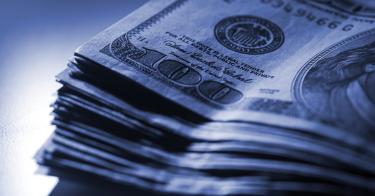There is no shortage of good economic news in America. More than 21 million jobs have been added since 2009. Wage growth is improving. Fewer people are having to take a second job to make ends meet. Unemployment rates are at or near historic lows for blacks, Hispanics, women and veterans.
But a dark cloud hovers over this sunny economy. Debt held by the public has risen to 78 percent of Gross Domestic Product (GDP), and the Congressional Budget Office (CBO) expects it to hit 95 percent within a decade.
These high levels of federal debt are contributing to lower levels of economic growth which has been sluggish since coming out of the recession. And yet many economists have suggested that now is a good time to borrow.
Yes, it is true that interest rates are historically low, and the Federal Reserve's Open Market Committee approved a quarter-point rate cut at the Sept. 17-18 meeting, putting the overnight funds rate in a target range of 1.75 percent to 2 percent.
Troubling phenomenon
However, to depend on rates staying low in order to finance more government spending is both short-sighted and incredibly dangerous. There is no guarantee that borrowing will continue to be cheap. With the Federal Reserve’s balance sheet at unprecedented levels, the inevitable unwinding of its assets will cause interest rates to rise again.
Additionally, even if borrowing remains cheap for the foreseeable future, deficit-financed spending is only sustainable and sensible if the government directs its funds towards productive activities. That is a very big if.
Private sector activity and innovation – not government programs – drive sustainable, long-term economic growth. Even if we set aside the negative impacts of perennial budget deficits, deficit-financed spending would not be the best option.
The strength of the dollar will also weaken as our budget deficit is seen as more and more unsustainable. Once risk-free, U.S. Treasury bonds will no longer be viewed as safe investments. If the demand for U.S. debt, especially short-term debt, declines, even more of our federal budget will have to be dedicated to paying interest.
The yield curve for Treasury bonds reflects this troubling phenomenon. Compare the yields on 10-year bonds and 3-month bonds. The yield on 10-year bonds is 1.65 percent while the 3-month yield is 1.82 percent. This implies more demand for long-term Treasury bonds than for short-term bonds.
It is odd for long-term bonds to be more desirable than short-term bonds unless there are serious concerns about the near-term economic health of the U.S. It is time for the government to stop stifling private sector growth and allow American industries to increase activity.
People often think that the budget deficit must be handled by Congress first cutting “discretionary” spending and then reforming major entitlement programs. However, one very important part of the budget that people often overlook is interest payments.
Interest payments currently make up nearly 8 percent of the federal budget and 1.6 percent of GDP. But the CBO expects that, absent a major action by Congress, the latter figure will quadruple within the next 30 years. That is a significant amount of money that will be syphoned off to pay interest instead of circulated in the economy for productive purposes.
The crowding out effect is also a very big issue. Private investment is the key to long-term economic growth, innovation, wage growth, increased standard of living, etc.
If the government keeps borrowing more money, and spending it less efficiently than the private sector, the economy’s growth potential will be increasingly hobbled.
This piece originally appeared on Fox Business



